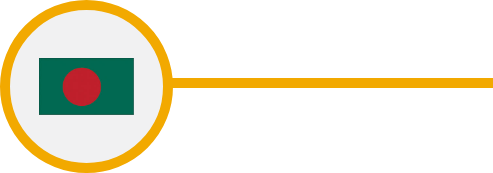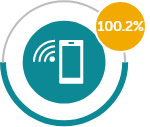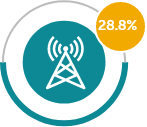BACKGROUND
According to WHO estimates, of the 360,000 people with TB in Bangladesh in 2020, 230,880 got notified (Global TB report, 2021), and the drop was majorly attributed to the COVID19 pandemic in the country [1] . However, the country has revived its strong TB surveillance rapidly and TB notification has bounced back in 2021 to surpass the reporting rates in 2019.
Bangladesh is also among the 30 High Burden countries for TB, as well as Rifampicin/Multi-drug (R + Isoniazid) Resistant TB. [1],[2] Around 1,113 laboratory confirmed MDR-TB and 67 XDR-TB (R + any fluoroquinolone) have been reported in 2020.
Approximately 49% of the children (aged < 5 years) that are household contacts of bacteriologically- confirmed TB cases have been put on preventive treatment. [1]
In order to achieve the key milestones of reducing TB deaths by 75 percent and TB incidence rate by 50 percent by 2025, NTP’s National Strategic Plan [3] outlines a set of key interventions for implementation, such as introduction of innovative active case finding approaches (with special attention to patients with DR-TB and comorbidities and pediatric TB); expansion of the diagnostic network; integration of TB services into the health service delivery system by using the existing health structure; improvement of clinical management systems for DS-TB and MDR-TB and an agile electronic TB surveillance system, in accordance with the ‘Digital Bangladesh-Vision 2021’ [4]
Bangladesh National TB Program has committed to build an advanced digital ecosystem to support TB surveillance. It is a priority to shift entirely to paperless recording and reporting, and to support the same, eTB Manager is being used at a national scale for case-based TB notification for a completely paper-less TB notification (already done at all DR-TB sites). Country’s national HMIS (DHIS2) is used as the key platform for electronic data management, and it is fed with Tuberculosis data from eTB manager as a quarterly aggregate reporting of TB cases in a dedicated dataset from all facilities across the country. In the current phase of transitioning to eTB manager, NTP’s traditional excel based reporting is also being practiced alongside. NTP has already directed and informed all the divisional and district managers to go paperless and use eTB manager for routine recording and reporting of TB patient data.
It is known that technology penetration plays a vital role in enabling the evolution of information systems from paper to digital solutions. While about 104.2% of the population is using mobile phone (i.e., at least one device per individual), the popularity of smartphones remains relatively low (41%), where internet access is only with about 28.8% population. Further enhancing digital inclusion in Bangladesh with access to reliable and affordable connectivity is a foundational step in maximizing the impact of deploying digital technologies on the government’s developmental aspirations. [5] , [6] , [7]
Apart from implementing eTB manager and DHIS2 platforms, the NTP in Bangladesh has a vision to leverage other digital innovations for better data collection and data use for positive programmatic outcome. An icddr’b supported intervention, Janao mobile app has been implemented as the digital tool for receiving case-based data from private providers and has been made interoperable with eTB manager for directly feeding data in the national system. Other digital tools being used by NTP & partners are further listed in the document.
Based on the multi-stakeholder discussions, interviews and independent research, and guidance from the National TB Program, this assessment report is an attempt to describe the current capacity and the identified gaps/ challenges in the digital ecosystem of TB surveillance. The report shares strategic recommendations for developing a comprehensive case-based TB surveillance system in the country while leveraging the existing infrastructure, in-house capacity, and assets.

STATUS OF CASE BASED TB NOTIFICATION
Currently the National TB program has been implementing primarily two tools for TB surveillance:
eTB Manager is National TB Program’s tool for collection of case-based data on a daily basis. The system is implemented at a national scale, and refresher trainings are being conducted in phases to strengthen and regularize the notification from all DS TB sites. All DR TB sites (9) have already established paperless reporting in eTB manager directly.
DHIS2 based aggregated data collection system which is being used at all health facilities of Bangladesh. This is a component of the National HMIS platform and records quarterly aggregated data for the entire country.
NTP identifies eTB manager as a mandatory tool for case-based notification at all sites where it is functional, and with its national scale-up its integration with DHIS2 is further mandated to feed aggregate data to the national HMIS as per the MOHFW guidelines.
At the health facilities (Upazila Health Complex and Hospitals) with fully integrated eTB manager, the data is exported and added in DHIS2. While at other health facilities, data from compiled excel sheets is manually entered in DHIS2 directly.
In the present transition phase for eTB manager (i.e., until it is functional at all facilities), NTP’s traditional excel based reporting system is also parallelly functional in the country and is considered as the most reliable source of TB data (98% accuracy).
The implementation and establishment of eTB manager for case-based reporting from all health facilities across the country holds a special mention. Bangladesh is among the very few developing countries that have successfully rolled out a case-based surveillance system at national scale, which is directly integrated with country’s national HMIS, i.e., the central server DHIS2 platform. With all Drug Resistant TB treatment centers digitizing the patient data in real time, and the strong commitment of the TB program to regularize DS-TB reporting by means of capacity building, the country will soon transition to a completely paperless reporting for all TB data.
Another notable success of the country TB program is the rapid recovery of TB notification during the COVID-19 pandemic. TB notification was majorly impacted by the first wave of COVID19 pandemic in 2020, but the country has has been able to bounce back the rates of TB notification and treatment initiation, reaching higher than the 2019 average.

ELECTRONIC TB NOTIFICATION DATA COLLECTION AND USE
| TARGET | CURRENT SCALE | COLLECTION TOOLS | DATA TYPE | DATA USAGE | |||
|---|---|---|---|---|---|---|---|

National Level
|
Data Not Collected from this level
|
eTB manager
reports, line lists DHIS2 dashboard |
|||||

Divisional
level
|
8 | Data Not Collected from this level | eTB manager
reports, line lists DHIS2 dashboard |
||||

District Level
|
64 | 160 | DHIS Web Application | Aggregated Data | eTB manager
reports, line lists DHIS2 dashboard |
||

Reporting units
(with more
than 1 associated
facilities)
|
858 (495 Upazila Health Complexes, and other hospitals) | DS TB – 858, DR TB - 9 |
eTB manager
(80% DS sites,
100% DR TB sites)
DHIS2 (non eTB manager sites) Excel (all facilities) |
Case Based
(Daily)
Aggregated (quarterly) Case based |
eTB manager reports, analyser,
line lists DHIS2 dashboard |
||

Community Level
|
Data not collected from this level | No digital tool for data use | |||||

CASCADE OF CARE MONITORING
PRESUMPTIVE SCREENING
TB Testing
Treatment Initiation
Treatment Monitoring
Treatment Outcome
Contact Tracing






| KEY DATA VARIABLES | Yes/No |
|---|---|
| Demographic details (Age, DOB, Gender) | 
|
| Address and contact details (Country, Division, District, House address) |

|
| Geolocation (GPS coordinates of the household) | |
| Contact details (Phone number/Mobile number, WhatsApp, Email etc.) |

|
| Health Facility address |

|
| Type of health facility (Public, Private etc.) |

|
| Site of TB (Pulmonary, Extra-pulmonary) |

|
| Type of diagnostic test (Microscopy, GeneXpert, TruNaat, CXR, etc.) |

|
| Date of test result |

|
| Drug susceptibility (DSTB, DRTB) |

|
| Treatment Regimen |

|
| Treatment start and end date |

|
| Co-morbidity (HIV, Diabetes, COVID-19 etc.) |

|
| Treatment monitoring/adherence |

|
| Treatment outcomes |

|
| KEY INDICATORS | Yes/No |
|---|---|
| Presumptive screening (proportion) |
|
| Treatment initiation (proportion) |

|
| Treatment monitoring/adherence |

|
| Treatment outcome (proportion) |

|
| Spatial distribution of TB notification | |
| Age-group & sex wise aggregate numbers and proportions notified |

|
| Basis of diagnosis wise aggregate numbers and proportions notified |

|
| Type/site/drug resistance wise aggregate numbers and proportions notified |

|
| Provider source-wise aggregate numbers and proportions notified |

|
| Comorbidity wise aggregate numbers and proportions notified |

|
| Key-population wise aggregate numbers and proportions notified |

|
| Estimate/Target wise notification/treatment coverage (proportions) |

|
| Provider-type disaggregated treatment outcomes (proportions) |

|
| Comorbidity disaggregated treatment outcomes (proportions) |

|
| Key population disaggregated treatment outcomes (proportions) |

|
 Digital
(aggregated)
Digital
(aggregated)
STATUS OF ELECTRONIC CASE BASED TB SURVEILLANCE
Electronic System For Case Based TB Notification
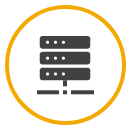
eTB Manager(80% DS sites, 100% DR TB sites), rest report aggregate data in excel/DHIS2
Lowest Unit For TB Notification Digitisation
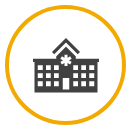
Reporting Centres (Upazila Health Centres And Other Hospitals)
Stage Of Notification

Diagnosis
Level Of Access And Use Of TB Notification Data
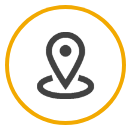
Upazila Health Center
Private Sector Notification

Manual Notification Process.
Frequency of digitization of TB notification
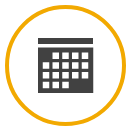
eTB manager- Daily DHIS2 - Quarterly
Mode Of Follow-Up With Notified Cases
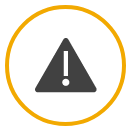
Manual Follow-Up- Phone Call, Physical Visit
Scale Of Implementation
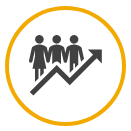
DHIS2 Aggregated System Is Scaled At National Level, Etb Manager – 80% DS Facilities, 100% DR Facilities
Contact Tracing For TB Notified Cases
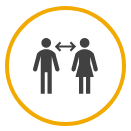
Module Present In etb Manager, But Not Implemented Yet
Multi-Channel Enablement

Private Providers & DOTS Centres Use A Mobile Application For Notification
Govt. order for mandatory TB notification
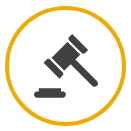
Yes, Guideline issued in 2014
PRIVATE SECTOR NOTIFICATION

To ensure private sector notification, Janao mobile app was piloted in 2019 through a collaboration of NTP and icddr,b with financial support from USAID. After successful implementation in Dhaka metropolis, NTP has initiated the scale-up, starting from Rajshahi Division. Data for both Drug susceptible and Drug Resistant TB is entered in the application.
COUNTRY IT CAPACITY
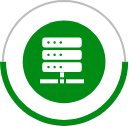
Country Server
Servers for DHIS2 are managed by the DGHS MIS, Ministry of Health, Bangladesh - eTB manager hosted at MSH servers
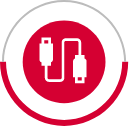
Interoperability
Data export and import done between eTB manager and DHIS2.
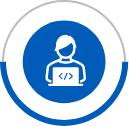
Country IT team
DGHS MIS (and HISP Bangladesh) team manages the DHIS2 application; eTB manager is supported by a local IT firm, JANAO app supported by icddr’b
CURRENT RESOURCES AVAILABLE
Under the MTaPs grant from USAID, Bangladesh has received a 2-year long support for rolling out eTB manager country-wide (includes capacity building, logistics support, software development, upgradation, troubleshooting and system monitoring.
USD 1.4 million has been granted for 2021-23 by The Global Fund for development of the TB module of eLMIS and its scale up.
Additional funding of nearly USD 0.02 million has been granted by USAID to icddr’b for scale up of JANAO mobile app.
Funding of USD 0.4 million (USAID, The Global Fund ) is available for supporting the ongoing implementation, server cost, technical support other internet costs.

MILESTONES ACHIEVED AND ROAD MAP
2010
Pilot of eTB manager at 6 health facilities
2012
Data entry in eTB manager scaled to 30 sites
2016
Aggregate data entry in DHIS2 started
2017
eTB manager scale up to 218 sites and integration with DHIS2
2019-20
Introduction of JANAO mobile app, interoperability/data exchange between JANAO app and eTB manager developed
2021
Phasing out of manual record keeping (Transition of all MDR TB facilities to complete paperless reporting). Enhancements in eTB manager – Oral drugs, TPT, TB-Hiv indicators, etc
2022-24
Nation wide scale up of eTB manager, Increased focus on Data quality, Transfer of eTB manager hosting from MSH to DGHS MIS servers, Exclusive ownership of TB notification system by NTP

OTHER COMPLEMENTING DIGITAL TOOLS
| Purpose | Tools | Channel | Developed By | Supported By | Scale |
|---|---|---|---|---|---|
| Digital Adherence | 99DOTS | Mobile application | Everwell | Icddr’b | Pilot |
| Logistic Management | Quant TB | Web Application | Ministry of Health | SIAPS | National |
| Laboratory Information Management | GxAlert | Web Application | Cepheid | USAID | 39 GeneXpert sites |
| Digital X-Ray (CAD4TB) | Web Application | DELFT CAD4TB | The Global Fund | Pilot | |
| Community Led Monitoring (CLM) | mHealth, ConnecTB | Mobile App | National TB control Program | USAID | Pilot |
| Contact Tracing | eTB manager | Web Application | NTP, Local IT firm | The Global Fund, USAID | Development completed, yet to be implemented |

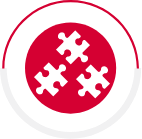

KEY CHALLENGES

User training for all TB reporting units has already been done across the country, but the country has inconsistent digital infrastructure and logistics at DS TB sites. Inadequate logistic support at the remaining facilities is a major bottleneck for a country wide paperless reporting.

TLCAs (TB Leprosy Control Assistants) are responsible for data entry to eTB manager, but they are heavily burdened (specially after COVID 19 pandemic). Also, the position is transferrable in nature, which causes a major scarcity of trained manpower.

Refresher training is urgently required for streamlining the eTB manager data reporting and ensuring data quality, but the country faces a financial crunch to support this activity.

DHIS2 being a common tool for all health programs and with it being owned by the MoH, any changes/ customizations in aggregate forms are to be routed through DGHS MIS, which causes significant delays.

Without 100% transition to real-time case-based reporting in eTB manager, gaps will be encountered in access to real time data, its analysis and use for action.

Inconsistency with electricity and internet connectivity, along with an inadequate maintenance/ on job facilitation support frequently causes reporting delays.
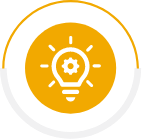
NTP VISION
- ❖ To ensure 100% scale up of e-TB Manager, completeness of data entry in e-TB Manager, in time reporting in online ( e-TB Manager ) and its interoperability with DHIS2.
- ❖ Further strengthen ON TIME reporting, realtime analysis of data within the platform of e-TB Manager and feedback.
- ❖ integration and sustainability of e-TB Manager within the National DG-MIS and adopting SERVER/ SOFTWARE -
- ❖ Continue the capacity ( training ) logistic support ( computer, internet) and troubleshooting within GOB resources.
- ❖ Improvement in data quality (accuracy, validity and precision) and reducing duplicity of effort in data entry.
- ❖ Real time dashboards for reviewing data against the targets from Strategic Plan.

RESOURCES NEED
Based on multi-stakeholder discussions, country feedbacks and recommendations for full-filling country’s vision, we have put together an estimated investment requirements and areas needing support for provisioning of a comprehensive case based digital TB surveillance system.
Hardware and Infrastructure :

Mobile Devices (for data collection): Bangladesh has 858 TB reporting units and to provision mobile device for every facility for case-based TB surveillance, USD 128,000 will be needed assuming USD 150 per mobile devices.

Tablet (for data use): Bangladesh has 495 upozila and 64 districts and 8 divisions and to promote active data use, each district and region should be given a tablet which would cost roughly around USD 113,400 assuming USD 200 per Tablet devices.

Internet: In case WiFi is not available in each facility, then mobile internet cost of around USD 858,000 should be considered (assuming USD 100 mobile data cost for the entire year per facility, district and regional user).

Server: Based on the current volumes of new cases, Bangladesh would need an investment of USD 20,000- 30,000 for next 3 years for server and server maintenance.
Note: Existing devices available through other health programs can be leveraged. In that case, the above-mentioned costing can be accordingly considered.
Software Development :

Based on various multi-stakeholder meetings and given the fact Bangladesh already have a strong foundation for DHIS2 aggregated system for TB, around USD 250,000- 400,000 should be budgeted for a comprehensive TB surveillance system and analytical dashboard for data use.
Capacity Building and Implementation :

After the software development, a dedicated pool of technical resources will be needed to support platform administration, data management and support. A team of 4-6 skilled resources attributing to a cost of around USD 48,000-72,000 per annum should be budgeted (or USD 144,000-216,000 for 3 years assuming USD 1,000 per month per resources). Additionally, reskilling of the current IT team should be budgeted.

Training: This would involve training material development and onsite and remote training of the trainers. Training sessions should be planned for each of the 495 districts, which could cost roughly USD 100 per district, amounting to USD 49,500 which will be further supported with e-Learning packages. Also, a dedicated trainer should be budgeted in case there is none.
TOTAL investment of around USD 1.5 – 2.0 million for 3 years will be needed on developing a comprehensive case-based digital TB surveillance system for Bangladesh
Disclaimer: The above budget is a function of number of facilities, districts and regions and expected volume of data. This only provides a ballpark figure of what is needed in terms of budget.

Recommendations
Following are some of the key recommendations suggested based on the findings of this assessment of country’s digital ecosystem and infrastructure:

Strategic Costing Plan
As a first step it is important for the country to create a comprehensive costed action plan for development, implementation and scale up of the TB case based surveillance system.
Based on NTPs vision and the recommendations for improvements , the plan should clearly define targets with actionable interventions and funding requirements supported with a detailed work plan with timelines. The plan will help the country to assess and monitor the progress and to mitigate risks
Tentative timeline: Month 0-1

Device Procurement
One of the limitations highlighted by NTP is the need to improve the data collection processes at the facility level. To streamline this, procurement, distribution and maintenance of the required data entry equipment like laptops, mobile/tablet devices should be done on an urgent basis. Improving the current infrastructure at the facilities is crucial for a complete transition to digital notification.
Tentative timeline: Month 0-6

System Integration
One of the challenges highlighted by NTP is the leveraging the data collected from the multiple sources (like GeneXpert) into the main eTB manager system as a central data repository for effective use.
The current eTB Manager platform and infrastructure needs to be extended to support integration with external systems like GeneXpert, TruNat, Digital X-Ray outputs, Pill boxes and other adherence tools which would help in effective use of the data for the patient care continuum as highlighted by the NTP.
Use of the recommended exchange / ETL tools like Talend and Informatica which include these features make the data management task much easier and simultaneously improve data warehousing needs to be considered. [8.1] , [8.2]
The platform architecture of both the eTB manager and DHIS2 is highly compatible with these standard tools and processes making this an effective solution. [9.1] , [9.2]
The data exchange process should follow and comply with FHIR , GDPR standards for more secured and seamless data exchange.
Tentative timeline: Month 0-6

Mobile app
Implementation of data collection via mobile app to ensure ease of use and real time reporting
One of the challenges reported by the NTP during the data collection processes is inconsistent data connectivity / network issues that delays reporting, and an inconsistent availability of hardware for data entry. One effective way to overcome this is to support the data collection processes by introducing a mobile application for the government facilities.
Other advantages for a mobile application include better performance , effective use of device features like in house system updates , usage of location , security measures and tracking user patterns and issue log mechanisms and other analytics measures.
Several mobile solutions for real time case-based notification can be explored for local adaption and building the mobile counterpart for eTB manager. Open source technologies like DHIS2 Mobile App, ODK and KOBO are some notable examples. [10]
Enhancement of JANAO app based on the pilot findings and its expansion can also be a useful approach.
Tentative timeline: Month 0-12

E-Learning
Packages to train health professionals on eTB manager use and workflows.
Any national scale roll-out will have its own capacity and training challenges which requires development of a comprehensive eLearning module allowing all health staffs involved in data collection process for training not only on the eTB manager application but also on the latest manual of procedure and continued medical education on TB care.
To address the challenges with periodic training of facility level staff to orient them on using eTB manager for direct data reporting, the MOH must engage in development of a comprehensive eLearning module for app training.
Training tools like Moodle [11] built on standard LMS framework can be reviewed for application rollouts.
Additionally, for training and updates on the latest manual of procedure and continued medical education on TB care, modules can be developed for TB Health providers, administrators at facility and district level to develop and enhance M&E competencies for ensuring a consistent program oversight, especially for the case-based tracker roll out within the existing applications.
Guide TB platform developed by WHO Philippines is a good example of eLearning module for health staffs involved in TB care.
Tentative timeline: Month 0-3

Capacity building for application maintenance
Planning for capacity building includes workforce assessment, ranging from ICT professionals to health workers providing care services. Since the application requires regular updates and adaptations, the system support team requires trained personnel on the technology stack in use.
Strengthening the NTP team with trained system administrators will help in reducing costs (in seeking technical support) and improving and expediting the planned implementations.
Tentative timeline: Month 6-24

Contact tracing application implementation
To strengthen the TB surveillance efforts of the country and for reaching out to all TB positive individuals, an active focus on contact tracing becomes crucial. The standard guidelines for household screening can be incorporated as a module in the national TB notification tool and be implemented to fast track the country’s efforts to eliminate TB and target the initiation of preventive treatment for all TB contacts.
Tentative timeline: Month 6-12

Patient Interactive Systems
Establishing a direct and secured mechanism for engaging with patient has potential for drastic improvements in tracking lost to follow-up patients.
Auto generation of notification and messaging by the system through communication channels like Social Media channel, IVRS and SMS outbound messages should be explored. Open source applications like Open MRS can be used for these activities. [12]
Tentative timeline: Month 6-24

Data Use
The NTPs plan clearly emphasizes on the importance and need for improve data use. This can be made possible by making case-based TB data across systems more real time and useful.
Building on the current eTB manager and DHIS2 visualization modules that offer a comprehensive dashboard for reviewing of program and data indicators, additional features of pivot table , event reports which support dimensions , data aggregation reports and individual line lists are extremely useful.
Apart from the standard DHIS2 and eTB manager dashboard features (and to strengthen and expand the data visualisation scope and making effective use of data for predictive modelling , data science and for advanced analytics) it is recommended to use best of the breed tools like Tableau , Power BI which offer these features. APIs can be generated and connected with these applications, and these can be used as an extended analytical component of the data analysis framework. [13]
Tentative timeline: Month 6-12

Strategic Technical Recommendations
Application Upgrades including Server Augmentation & Infrastructure Upgrades : To make sure that systems implementation and scale up of application is supported well, the key need is to have a long-term strategic plan that would cover the technical and operational objectives.
The strategy recommended would cover the following core areas
✓ Technical Upgrades: Based on the architecture, the upgrade would be done with the database, a middleware system, the operating system or the hardware.
Additionally, the architecture should support the integration layer which would be needed for data exchange with other national / external systems. The technologies that need to be brought in and the areas of inter-connection need special focus.
Recommended data system architecture would include updating the version of the current DHIS2 to 2.34 which offers better features on data management , encryption and exchange standards.
Additionally, the advance admin features offered by this version help the administrators to support the operational needs better for onboarding users , real time change in data variables and user management etc effectively.
Apart from this version 2.34 also supports compliance to GDPR standards and offers more controlled data encryption practises. [14]
✓ Performance Optimisation & Testing : To support the national scale up and implementation strategies it is very essential to have system(s) and application testing done to enable a reliable platform and which also helps in architecture updates and augmentation.
Automated System and Application Testing tools like Selenium and Appium can be used. Load Testing tools which helping in database sizing and planning need to be adapted for effective planning . [15.1] , [15.2]
✓ Application & System Security Audit
To strengthen the current systems framework and ensuring long term sustenance it is important to have regular evaluation of the security of the information and systems by measuring how well it conforms to an established set of criteria.
These would also include developing a framework which should outline policies in line with recommended standard policies like HIPAA [16.1] , [16.2] to cover
• Patient Data Management
• Server & Infra guidelines
Apart from application measures offered by DHIS2 [17] for patient data security , hosting solutions offered from Azure also cover these as part of their deployment options which can be considered as part of systems hosting. [18]
ACKNOWLEDGMENT
We thank the Line Director National TB and Leprosy Program, Prof. Dr. Md. Shamiul Islam and the entire team for participating and engaging in the assessment. We would also like to extend our gratitude to Dr. Rupali Sisir Banu for providing valuable insights into Bangladesh’s vision for creating an advanced case-based TB surveillance and notification system.
CONTACT DETAILS
National Tuberculosis Control Program Directorate General of Health Services Mohakhali, Dhaka, Bangladesh
Telephone : +880 28816459
Email : info@dghs.gov.bd
REFERENCES
- TB Data References : https://worldhealthorg.shinyapps.io/tb_profiles/?_inputs_&entity_type=%22country%22&lan=%22EN%22&iso2=%22BD%22.
- TB Data References : http://www.stoptb.org/countries/tbdata.asp.
- TB Data Reference : https://www.usaid.gov/sites/default/files/documents/Bangladesh_Narrative_TBRM21_TBDIAH_Version_Final.pdf.
- TB Data References : http://btri.portal.gov.bd/sites/default/files/files/btri.portal.gov.bd/page/ a556434c_e9c9_4269_9f4e_df75d712604d/Digital%20Bangladesh%20Concept%20Note_Final.pdf.
- Digital Landscape : http://www.btrc.gov.bd/content/mobile-phone-subscribers-bangladesh-january-2021.
- Digital Landscape : https://datareportal.com/reports/digital-2021-bangladesh?rq=bangladesh
- Digital Landscape : https://www.gsma.com/mobilefordevelopment/wp-content/uploads/2021/03/Achieving-mobile-enabled-digital-inclusion-in-Bangladesh.pdf
- System Integration Tools ( Talend , Informatica ) : https://www.talend.com/index.php, https://www.informatica.com/
- DHIS 2 API & DHIS2 Data Transformation Services : https://docs.dhis2.org/en/develop/using-the-api/dhis-core-version-235/web-api.html, https://docs.dhis2.org/en/use/user-guides/dhis-core-version-236/maintaining-the-system/importexport-app.html
- DHIS2 Mobile App : https://dhis2.org/android/
- Application Training Tool : https://moodle.org/
- OPEN MRS : https://openmrs.org/
- DHIS2 Power BI : https://community.dhis2.org/t/dhis2-to-powerbi-connector-is-ready-check-out-the-video-test-it-use-it-and-give-us-feedback/37043
- Features of DHIS 2.34 : https://dhis2.org/overview/version-234/
- Performance Tools ( Selenium , Appium ) : https://appium.io/, https://www.selenium.dev/
- HIPAA Compliance Framework : https://www.hhs.gov/hipaa/for-professionals/security/laws-regulations/index.html, https://www.hipaajournal.com/considered-phi-hipaa/
- DHIS Security : https://dhis2.org/security/
- Azure Hosting Services : https://docs.microsoft.com/en-us/azure/compliance/offerings/offering-hipaa-us
